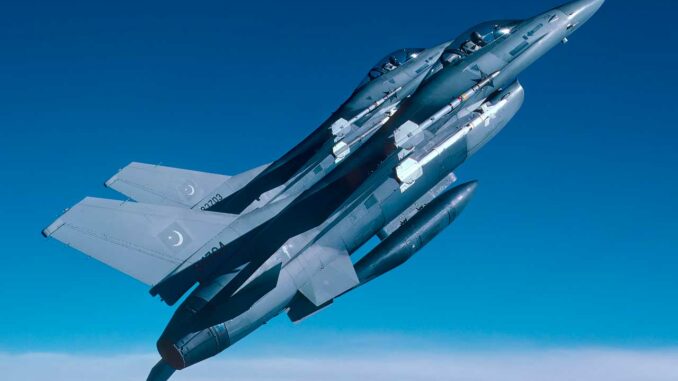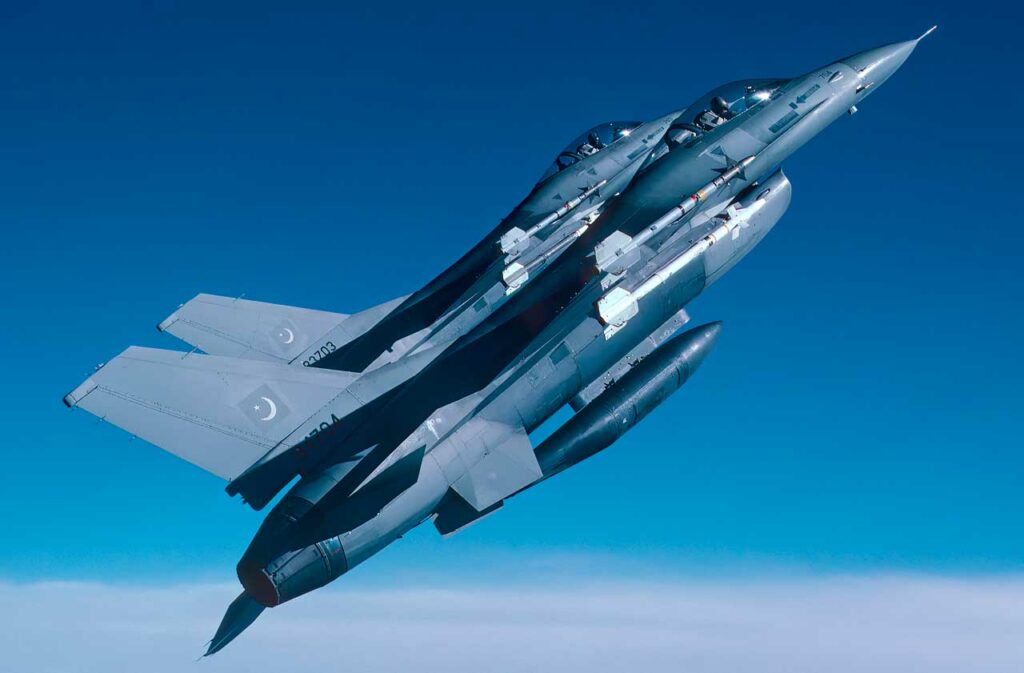
The Pentagon awards $41.6 million for AMRAAM C-8 and D-3 missiles. This is a strong signal for Pakistan’s F-16s and the industrial chain, with deliveries scheduled until 2030.
Summary
On October 8, a $41.6 million amendment bolsters production of AMRAAM missiles in their AIM-120C-8 and AIM-120D-3 versions. This funding, linked to the FA8675-23-C-0037 framework contract, is part of a broader effort to modernize and support exports, with an industrial deadline set for May 2030. For the Pakistan Air Force, which operates F-16 Fighting Falcons (including F-16C/D Block 52+), the benefits are clear: maintaining beyond-visual-range air-to-air capability, incorporating the latest software and hardware developments, and ensuring interoperability with allied standards. Technically, the AIM-120D-3 variant is derived from the Form, Fit, Function Refresh (F3R), an overhaul of the electronics that provides gains in range, jamming resistance, and logistical reliability. On a global scale, the amendment bolsters the AMRAAM order book, already supported by recent export notifications (Germany, Japan). The challenge is twofold: to deliver on time and maintain a qualitative advantage in the face of evolving threats.
Contract context and industrial framework
The $41.6 million amendment covers additional batches of AIM-120C-8 and AIM-120D-3 missiles under Air Force contract FA8675-23-C-0037. It brings the cumulative value to over $2.51 billion, with industrial completion scheduled in Tucson, Arizona, by May 2030. The action is part of a larger series of awards (over $1 billion for lots 37-38) that secure critical production rates and supplies.
In practice, this type of amendment allows for the smoothing of costs between US customers and FMS buyers, the absorption of obsolescence, and the introduction of software improvements without interrupting production. The contractual mechanism protects the schedule and limits the risk of cost overruns thanks to the firm-fixed-price mode.
The variants concerned: C-8 and D-3, same objectives, different trajectories
The AIM-120D-3 is the latest iteration of the AMRAAM. It is derived from the F3R program, which replaces fifteen electronic cards, modernizes the computer, and “rehouses” the software on a sustainable digital architecture. The objective is threefold: electronic resilience, ease of incremental updates, and preparation for extended firing profiles. Recent tests have shown improved performance, particularly in flight time and optimization of available energy.
The more compact AIM-120C-8 benefits from the same F3R philosophy in the guidance section. It remains compatible with the hatches and rails of 4th generation fighters, while offering increased margins against jamming.
Useful orders of magnitude: typical weight ~152 kg (335 lb), length ~3.66 m (12 ft), top speed close to Mach 4. The range of the family reaches up to 160 km (86 nmi) for the D version, depending on the launch profile, altitude, and kinematic parameters. The C-8 is below this but exceeds 100 km (54 nmi) in optimal conditions.
The Pakistani F-16 fleet: standards, sensors, and integration
The Pakistan Air Force operates approximately 75 F-16s in service, a mix of modernized (MLU) A/B aircraft and F-16C/D Block 52+ aircraft. The Block 52+ aircraft are equipped with APG-68(V)9 radar, MIL-STD-1760 interface, and LAU-129/A rails, ensuring “native” AMRAAM integration. In terms of architecture, compatibility is aimed at ensuring continuity of mission software, payload management, and alignment of firing parameters with the C-8/D-3 versions.
A typical F-16 can carry two to six AMRAAMs depending on the mission, combined with a short-range IR seeker. The Pakistani Block 52+ aircraft, already armed with C-5/C-7 missiles, will benefit from a leap in capability in terms of ECCM, sensor reliability, and power management, subject to FMS authorizations and test/qualification schedules specific to each fleet.

Tactical implications: BVR, jamming, and contested environments
The core added value lies in beyond visual range (BVR) combat. The F3R upgrades enhance the AMRAAM’s ability to engage maneuvering targets in a congested electromagnetic spectrum. Improvements in inertial navigation, the quality of mid-course updates, and the robustness of the active seeker stabilize interception until the terminal phase.
Combined with the F-16C/D, this allows for “higher and faster” firing profiles, which improves end-of-course energy. Recent software optimization has also demonstrated significant extensions to the field of use on other platforms. For an air force, the gain is not just “raw range”: it is an increased probability of interception against targets that maneuver, jam, or fly low.
The international scale: recent orders and export momentum
The October 8 amendment is part of a sustained export dynamic. Germany recently announced the acquisition of several hundred AIM-120D-3 missiles, while Japan has requested a large mixed D-3/C-8 package. This trend keeps production lines running at full capacity, standardizes standards among allies, and secures strategic stocks.
For F-16 Fighting Falcon operators, the C-8 guarantees continuity of capability on 4th generation airframes; the D-3 prepares for interoperability with newer fighters (and more powerful sensors), while remaining compatible with existing weapon architectures. At the NATO and Indo-Pacific partner level, standardization of versions simplifies training, procurement, and support.
The industrial chain: production rate, obsolescence, and the 2030 schedule
On the industrial side, Raytheon concentrates assembly and testing in Tucson. The AMRAAM workload is managed in batches (Batch 37, Batch 38, etc.), with ramp-ups validated in recent years. The F3R is not just a cosmetic redesign: it addresses component obsolescence, paves the way for software agility, and stabilizes life-cycle costs.
The May 2030 milestone is a reasonable window for absorbing additional production, delivering modernized guidance kits, and synchronizing fleet-side software updates. For the buyer, the challenge becomes planning aircraft downtime, test equipment, and crew qualification.
The effects for Pakistan: preparation, training, and support
For Islamabad, the interest goes beyond “range.” The expected benefits include ECM resilience, consistency between sensors and weapons, and the path to software modernization. F-16 squadrons will need to align mission libraries, intermediate maintenance of guidance sections, and firing procedures.
On the training side, the most sensitive part remains BVR training in a realistic environment: working on CAP/Intercept timelines, mastering tactical situation exchanges, and optimizing firing windows without overexposing vectors. The AMRAAM C-8/D-3 provides more latitude; it must be transformed into measured and reproducible lethality.
Limitations and points of attention
The advertised performance depends heavily on altitude, initial speed, and targeting quality. Export restrictions, ITAR management, and authorized software versions may also differ from one customer to another. Finally, the manufacturer’s ramp-up must take into account other allied orders and the availability of electronic subassemblies.
Strategically, regional balance will depend as much on available volume as on training levels, onboard sensors, and coordination with other air-to-air missiles.
What to watch for in the coming months
Several signals will indicate whether the amendment is delivering on its promises: validation of production milestones, arrival of the first modernized guidance sections at FMS operators, additional announcements of European and Asian orders, and feedback on effectiveness in cluttered environments.
If the trajectory remains on track, the AMRAAM ecosystem will stay one step ahead, while offering F-16C/D fleets incremental, controlled, and sustainable modernization.
War Wings Daily is an independant magazine.